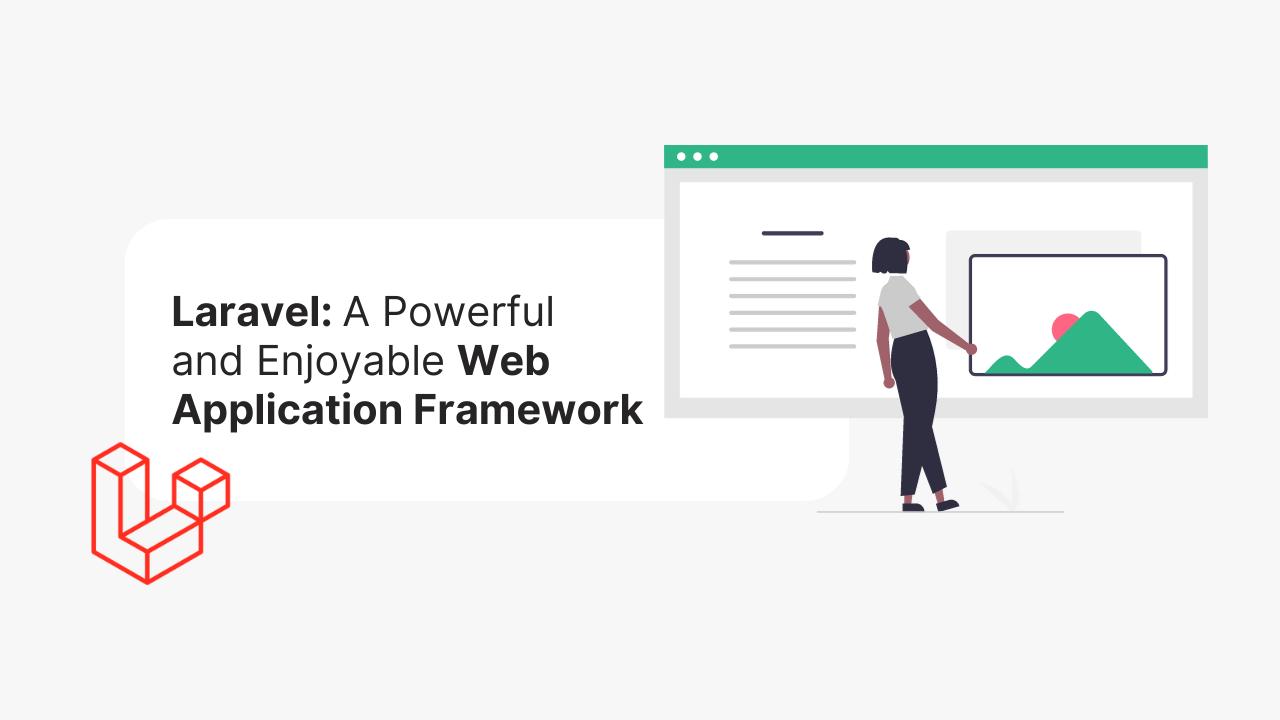In the vast and ever-evolving world of web development, Laravel has emerged as a framework that has gained immense popularity and enjoyment of use among developers. With its elegant syntax, extensive features, and focus on development speed, Laravel has become a go-to choice for building amazing projects, and it is often the first choice for developers embarking on a new framework.
Introduction
Composer Integration for Seamless Package Management
Composer Integration for Seamless Package Management
Laravel utilizes Composer for perfect package management, which allows developers to integrate third-party libraries and components into their projects easily.
Built-in Security Features
When it comes to security, it is worth mentioning that Laravel has built-in security features, including protection against different types of attacks like SQL injection and cross-site request forgery.
Developer-Friendly Ecosystem and Artisan Command Line Tool
Laravel, developed by Taylor Otwell, is a PHP web application framework that provides an enjoyable experience for developers. It allows them to write code cleanly and expressively, making the development process more efficient and enjoyable. One of the key reasons behind Laravel's success is its ability to integrate seamlessly with different ecosystems within the PHP ecosystem. The latest stable release of Laravel is version 10. It's been publicly available since February 14, 2023.
What I personally like about Laravel is its artisan command line tool, which makes development even more faster with its common tasks. For example, we are able to make controllers, models, migrations, db seeders for database seeding, and many other artisan commands, which definitely save us time.
Eloquent ORM: Streamlining Database Operations
Also, the thing that attracted me as an old-school PHP developer and many more users to love and use Laravel at a time when new framework launches very often is the fact that it provides a developer-friendly ecosystem and simplifies PHP low-level implementation details, which give us enjoyment of use. In Laravel, lines of code written in PHP can be replaced with one line Laravel's function. An example of this is paging.

In PHP, it involves an amount of manual work and writing code, so it can be error-prone. It includes querying the database, calculating the number of pages, and displaying the pagination links, calculating the total number of pages and the current one. Laravel simplifies the process by providing built-in pagination support. When using Eloquent, Laravel's ORM, users can simply call the "paginate" method on their query to retrieve paginated data.
Versatility Across Industries
One of the standout features of Laravel is its powerful ORM (Object-Relational Mapping) called Eloquent. Eloquent simplifies database operations by providing an intuitive and expressive syntax for database interaction. This feature greatly enhances the development speed and allows developers to focus more on building the core functionality of their web apps.
Laravel's versatility is evident in its usage across various industries. ZenDev has successfully utilized Laravel for numerous client projects. For Zynka BIM, we built a platform for facility management.
The main goal was to build an efficient, multipurpose solution and secure the integration of third-party systems into Zynka's. The client needed specialized solutions, so we opted for Laravel as a base PHP for a custom web application. Laravel also gave us all the creative room we needed.
We developed mobile 3D view renderers integrated into client applications, offering various perspectives of 3D floor plans. In simple terms, our application enabled users to designate points of interest in 3D environments, connecting them to assets in a catalog.
This platform is a valuable tool across several industries, as it is a revolutionary way of managing how buildings are designed, constructed, and operated.
The framework's ability to handle enterprise-level complexity while maintaining stability has made it a perfect choice for building scalable web apps.
Avidnote: A Laravel Project for Researchers
One of our Laravel projects - Avidnote, is a web application for researchers used and recommended by Princeton, Oxford, Harvard and many more. The tool consolidates key elements of the research process into a single interface, streamlining the production of scientific work for enhanced efficiency.
With the release of Laravel Octane, the framework has further improved its performance and speed. Laravel Octane optimizes the execution of Laravel applications, resulting in faster response times and improved efficiency. This makes Laravel an even more attractive option for developers building high-performance web applications.
Laravel Jetstream: Accelerating Application Development
Another addition to the Laravel ecosystem is Laravel Jetstream, which provides a robust starting point for building Laravel applications. It offers authentication, team management, and API support out of the box, saving developers valuable time and effort.
Laravel Vapor: Serverless Deployment Platform
Also, when it comes to Laravel, it is worth mentioning Laravel Vapor - a serverless deployment platform for Laravel. It is designed to simplify the deployment and scaling of Laravel applications on Amazon Web Services (AWS) Lambda, AWS Fargate, and other AWS services.
Here are some key features and benefits of Laravel vapor
- Serverless Architecture: Vapor allows you to run your Laravel application using serverless architecture, which means you don't need to worry about server provisioning, scaling, or infrastructure management. AWS Lambda handles the execution of your code in response to HTTP requests.
- Auto-Scaling: Vapor automatically scales your application based on the incoming traffic, ensuring optimal performance and cost-efficiency. It can handle traffic spikes without manual intervention.
- Easy Deployment: Vapor provides a straightforward and Laravel-native way to deploy your application. For development and deployment, you can use familiar Laravel tools like Artisan and Composer.
- Database Integration: Vapor integrates seamlessly with various AWS database services like Amazon RDS and Amazon Aurora, simplifying the database setup and management.
- Monitoring and Debugging: Vapor includes built-in support for monitoring and debugging tools, making troubleshooting issues and analyzing application performance easier.
- Custom Domains and SSL: You can easily configure custom domains and SSL certificates for your Vapor application, ensuring that your application is accessible securely with a custom domain.
- Environment Management: Vapor supports different environment configurations, allowing you to manage different settings for development, staging, and production environments.
- Caching and Queues: It supports caching and queue processing, ensuring that common Laravel features work seamlessly in a serverless environment.
- Integration with Other AWS Services: Vapor leverages other AWS services like Amazon S3 for file storage, Amazon CloudFront for content delivery, and more, further enhancing your application's capabilities.
- Cost-Efficiency: With Vapor, you only pay for the resources you use, making it cost-effective, especially for small to medium-sized applications.
FAQs about Laravel
Now, let's address some frequently asked questions about Laravel:
Q: What is Laravel used for? A: Laravel is used for building web applications and APIs using PHP.
Q: Which is better, PHP or Laravel? A: PHP and Laravel are not alternatives to each other; they work together. PHP is the underlying language used to build web applications, and Laravel is a popular PHP framework that simplifies and accelerates web application development. The choice to use Laravel or another framework depends on your specific project needs and your familiarity with the framework.
Q: Is Laravel still relevant in 2023? A: Absolutely! Laravel continues to evolve and adapt to the changing needs of web development. Its active community and regular updates ensure its relevance in the coming years.
Q: Is Laravel good for backend? A: Yes, Laravel is excellent for backend development. Its features, such as Eloquent ORM and powerful routing system, make it a preferred choice for building robust backend systems.
Q: Is Laravel good for frontend? A: While Laravel does provide some frontend features, it is primarily focused on backend development. For complex frontend requirements, integrating Laravel with frontend frameworks like Vue.js, React, or any other frontend programming language is a common practice.
Q: Is Laravel good for big web applications? A: Yes, Laravel is well-suited for building big web applications and enterprise complexity. Its scalability, stability, and extensive feature set make it an ideal choice.
Q: Why Laravel is so easy? Laravel provides developers with an inbuilt library of tools that reduce the amount of coding they need to do. Laravel is easy to learn. Laravel allows developers to focus on their web application's design, architecture, and functionality.
Conclusion
As we navigate through the various facets of Laravel, it becomes evident why this framework remains a favorite among developers. From its elegant design to powerful features and ongoing improvements, Laravel stands as a testament to the evolution and adaptability required in modern web development.
About author
-
2 minutes
The co-founders of Zendev, a software development agency that's been active since 2016, discuss industry changes and the future ahead of us.
-
15 minutes
Recently, Rahatland media shared an inspiring story about Senad Šantić's (our CEO) journey from Sweden back to Bosnia and Herzegovina. For our non-BHS speaking friends (and let's be honest, for those who claim they speak BHS but really just nod…
-
5 minutes
Simply put, nearshoring means partnering with skilled tech teams in nearby countries to build great software, save money, and stay efficient.
-
5 min
Why would anyone choose to speak on this topic? Quitting is not a popular word in the business language.
When I got an invitation to give a keynote speech at …





